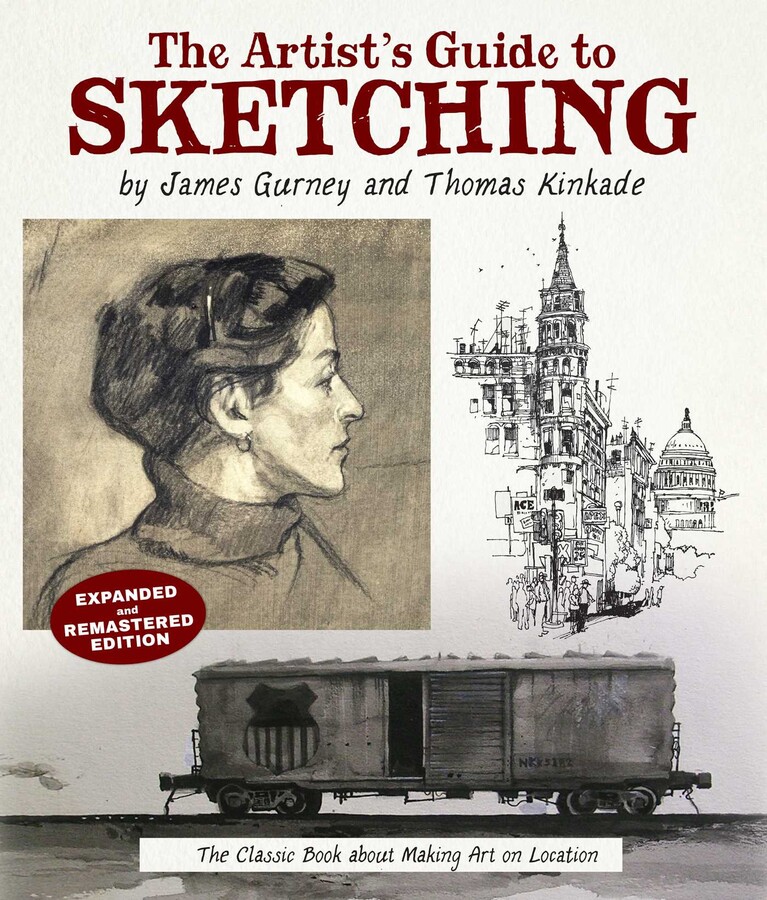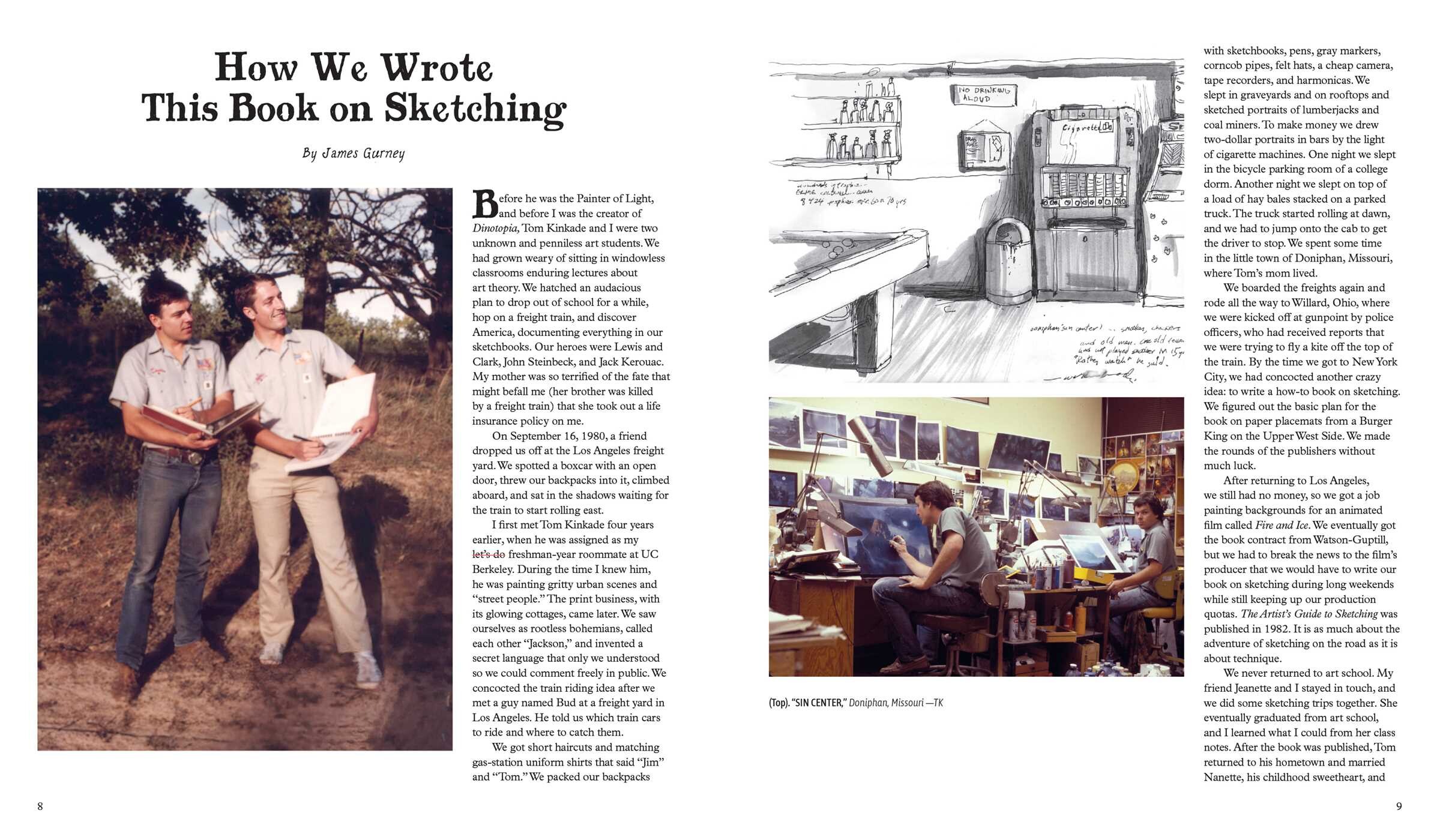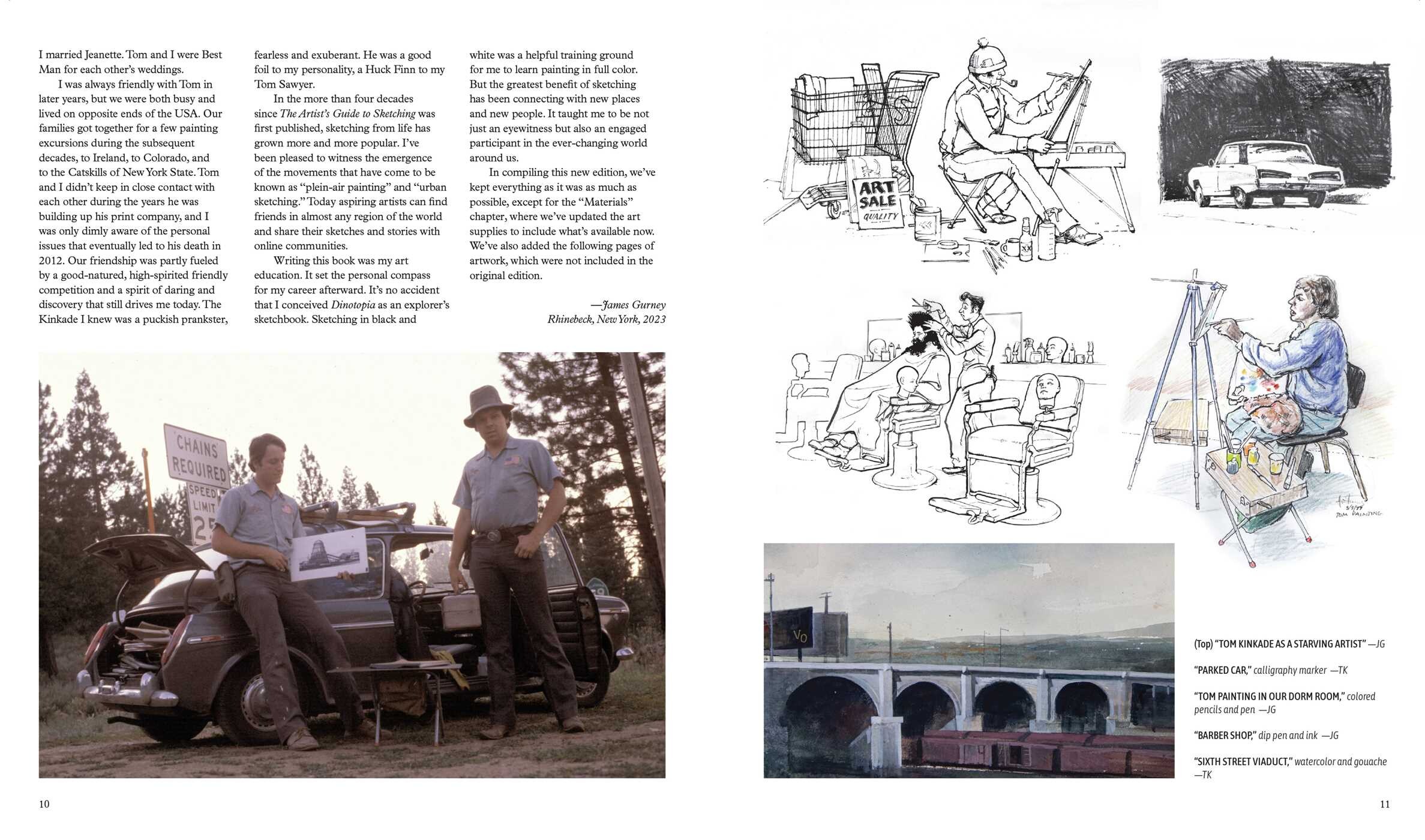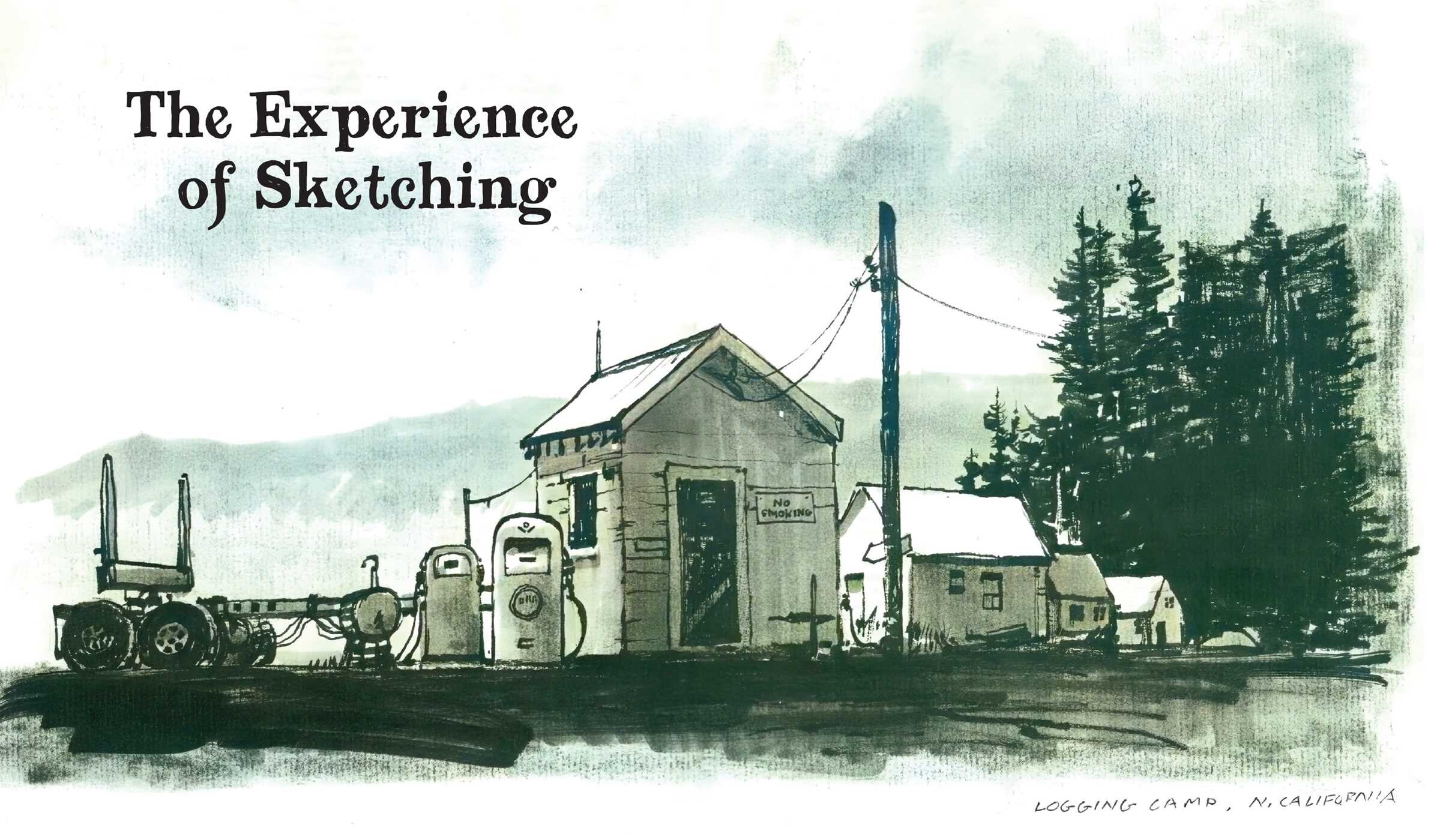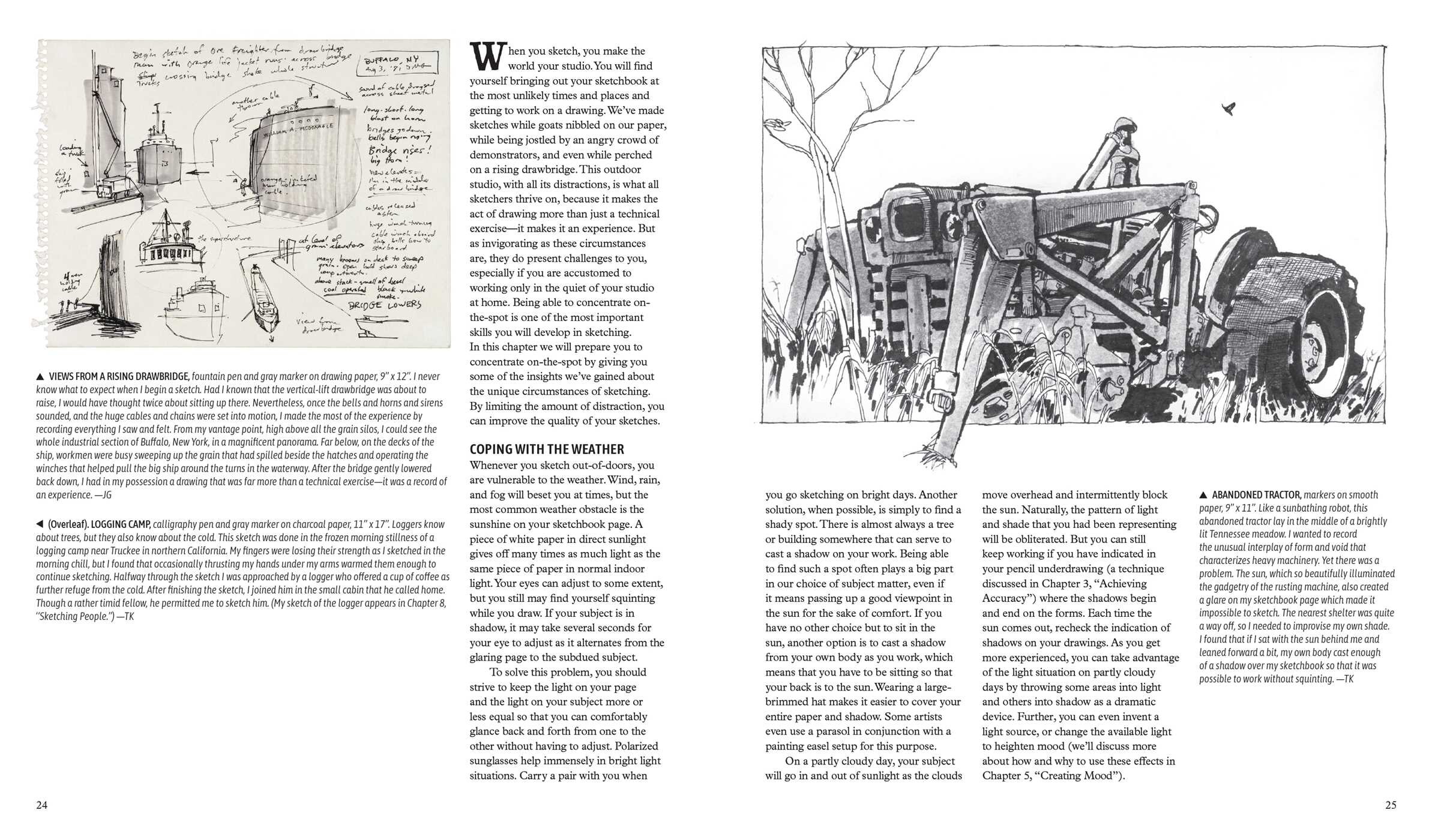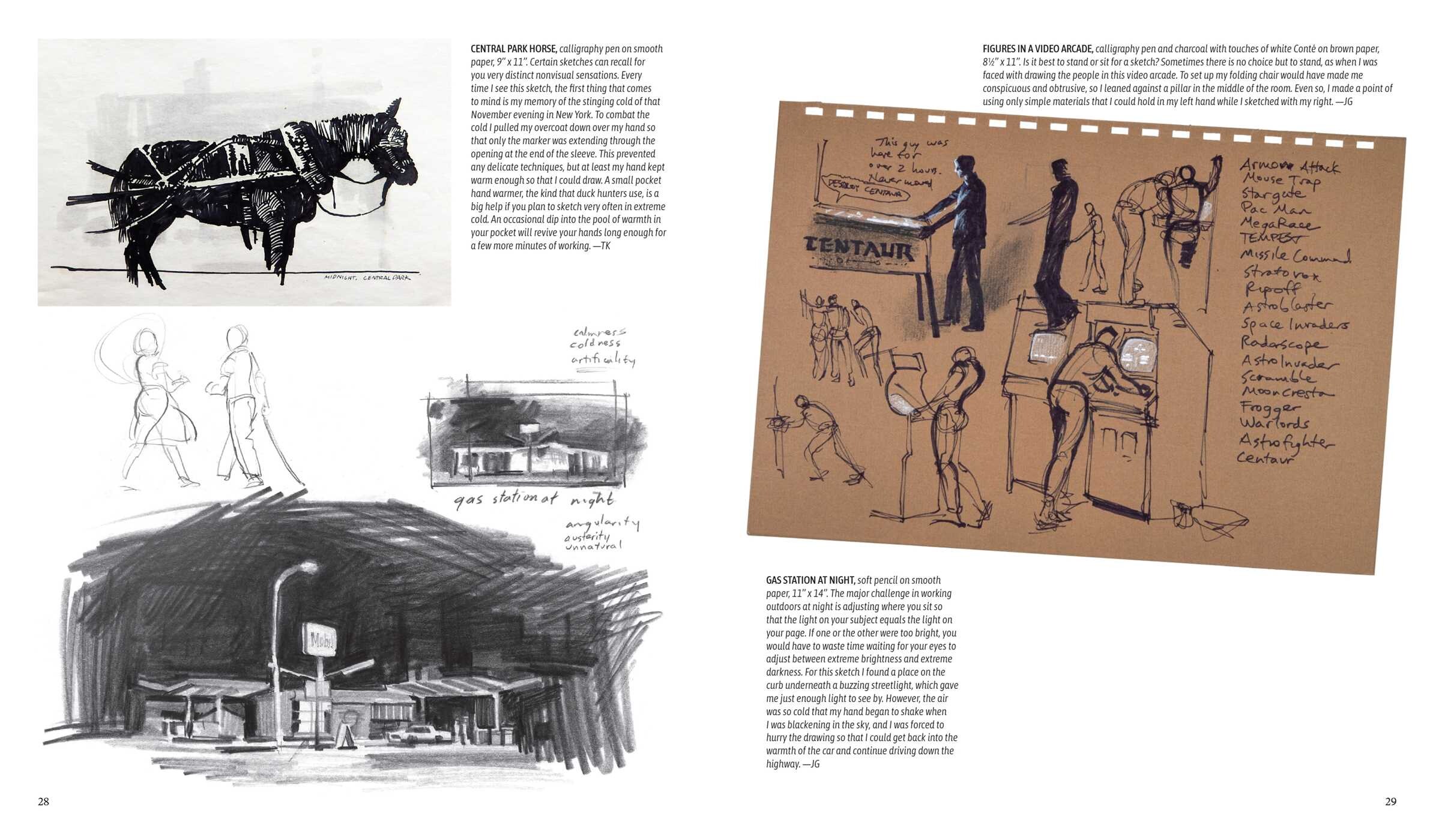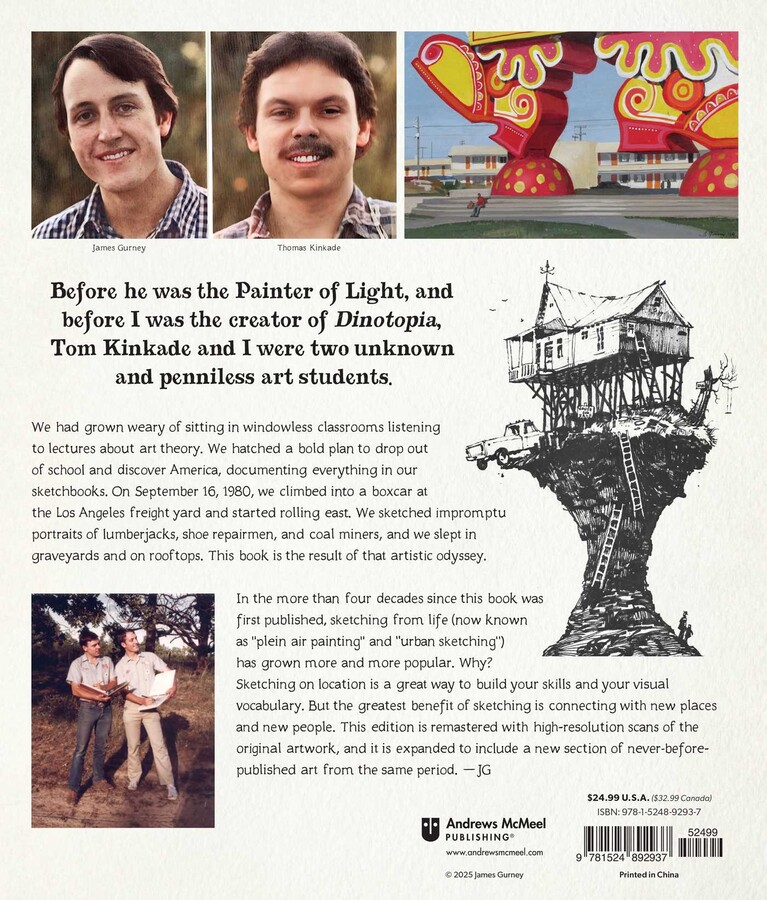Get our latest book recommendations, author news, competitions, offers, and other information right to your inbox.
The Artist's Guide to Sketching
The Classic Book about Making Art on Location
Table of Contents
About The Book
"If I could only have one drawing book on my shelf, it would be this one." –Shari Blaukopf, author of the Urban Sketching Handbook: Working With Color
Since its release in 1982, The Artist’s Guide to Sketching has become a classic art guide for students and laypeople around the world. The book includes instruction and artwork by James Gurney and Thomas Kinkade—two students who would go on to fame with Dinotopia (Gurney) and as the “Painter of Light” (Kinkade). This new edition restores the classic text with updated full-color visuals and a special section chronicling the book’s origins and the friendship, drawing on archives from Gurney and the Kinkade family estate.
Chapters and topics include:
- Chapter 1: THE EXPERIENCE OF SKETCHING (Coping with the Weather, Sketching at Night, Sitting or Standing?, Dealing with Curious Spectators, Being Inconspicuous, At Home Amid the Elements
- Chapter 2: MATERIALS (Sketchbooks, Pencils, Pens, Markers, Wash and Drybrush, Sketchboxes and Carrying Cases, Experiencing Your Materials)
- Chapter 3: ACHIEVING ACCURACY: (When to Use an Underdrawing, How Much Underdrawing is Necessary, Establishing the Large Shapes, Measuring Lengths, Measuring Slopes, Using Perspective Guidelines, Constructing with Geometric Forms, Completed Underdrawing, The Final Execution)
- Chapter 4: CAPTURING MOTION (Freezing Motion: A New Way of Drawing, Learning to Observe Motion, Training Your Memory, Getting It Down Fast, The Scribble Approach, The Gestural Approach, The Mannikin Approach, The Tonal Mass Approach, When Your Subject Moves Unexpectedly, Places to Go for Motion Sketching)
- Chapter 5: CREATING MOOD (Choosing a Subject, Noting Impressions, Composing with Thumbnails, Selectivity, Center of Interest, Dramatic Opposition, Delicacy, Mystery, Structure and Expression)
- Chapter 6: USING IMAGINATION (Dare to be Creative, Being Imaginative On-the-Spot, Exaggeration, Changing Context and Scale, Using Anthropomorphism, Additions and Combinations, Feeding the Imagination, Becoming More Imaginative)
- Chapter 7: STUDYING NATURE (Nature: Your Personal Drawing Workshop, The Experience of Nature Sketching, Plants, Animals, Sketching at the Zoo, Natural History Museum, Clouds, Rocks and Landforms, The Benefits of Studying Nature)
- Chapter 8: SKETCHING PEOPLE (Finding Raw Material, Exaggerating Character Traits, The Cartoon Approach, Portraying People in Their Environment, Two Characters, Group Composition, The On-The-Spot Portrait, Making People Sketches Come Alive, Family and Friends: Your Free Models)
- Chapter 9: EXPLORING THE MAN-MADE WORLD (Begin with the Commonplace, Sketching the Home, Indicating Building Exteriors, Signs and Letterforms, A New Look at Machines, Using Clutter, On-The-Spot Spot Research, Using Written Notes, Thinking As a Documentary Artist, The Joy of Exploration)
- Chapter 10: SKETCHING IN YOUR LIFE (Keeping Specialized Sketchbooks, Developing Sketches into Paintings, Sharing Sketches With Others, Sketching Alone or With Others)
Product Details
- Publisher: Andrews McMeel Publishing (February 27, 2025)
- Length: 176 pages
- ISBN13: 9781524892937
Browse Related Books
Raves and Reviews
"The Artist’s Guide to Sketching conveys the what, where, how-to and, most importantly, the why of drawing on location. As a lifelong reportage artist, urban sketcher and arts educator, I highly recommend the expanded edition of this classic book to art students, professionals, hobbyists, and everyone in between. Drawing connects us to our world, and this book connects us to drawing." (Veronica Lawlor, Reportage Artist and Professor)
"The Artist’s Guide to Sketching is at once a compelling memoir and an inspirational call to artists to break free from generic images and clichéd concepts by getting out and recording the real world in all its wonder and complexity." (Alice A. Carter, Author and Professor Emeritus of Animation/Illustration, San Jose State University)
"This is a marvelous book, filled with the kind of wisdom you'll never find in a classroom or library. Two artists paid their dues and learned valuable lessons on their cross-country sketching safari. They've passed those lessons on to us in a classic book, now expanded and remastered. Their practical pointers about drawing materials and techniques are important, but equally important is the inspiration we get from the story of the two travelers hopping freight trains and sleeping on rooftops, earning their way by the sheer love of drawing. Profusely illustrated, beautifully written." (David Apatoff, Art Critic, The Saturday Evening Post)
"One goes to the world’s great museums to see and learn how the great masters composed their works. For modern masters, we have Gurney & Kinkade’s book." (Alan Dean Foster)
"Every urban sketcher should own a copy of The Artist’s Guide to Sketching. In fact, if I could only have one drawing book on my shelf, it would be this one. It’s packed with that many insights about drawing on location, about everything from perspective to people sketching to nature and animals. But for me, the most brilliant section is about learning to capture motion by training your eye to freeze a gesture so you can record it in your sketchbook. I find myself returning to insights like these again and again. James and Thomas are penetrating, generous and thoughtful on every page, and it’s impossible to not be inspired by their love of drawing." (Shari Blaukopf, co-founder of Urban Sketchers Montreal and author of The Urban Sketching Handbook: Working with Color)
"More than a time-tested manual of drawing skills, this book is a grand adventure. Two young friends hit the road on a journey of self-discovery. Follow the footsteps of Gurney and Kinkade as they sketch their own ticket across America."
(Marc Holmes, Urban Sketchers)
"This book is a treasure. It's a practical guide to drawing in uncontrolled situations, but also an inspiration to creativity. Its true value lies in the way it clearly demonstrates how the act of sketching brings the artist to a closer understanding of the richness of the world." (Nick Jainshigg, Associate Professor of Illustration at the Rhode Island School of Design and coauthor of The History of Illustration)
''This is not only a wonderfully practical guide to the materials and practices of sketching but also considers the deeper benefit of feeding our soul through a connection to our subjects." (Joe Paquet)
“This is the book that started it all.” (Patrick O’Brien, President of the American Society of Marine Artists and part-time Professor of Illustration at The Maryland Institute College of Art)
Resources and Downloads
High Resolution Images
- Book Cover Image (jpg): The Artist's Guide to Sketching Trade Paperback 9781524892937

